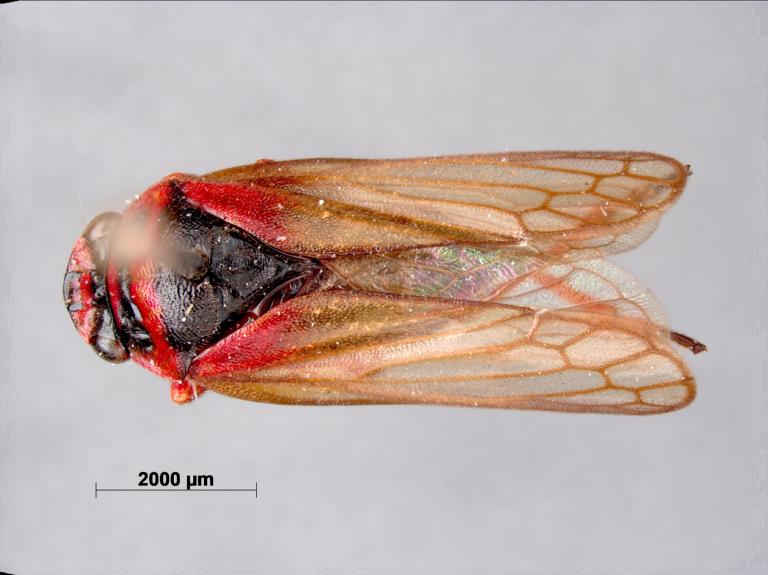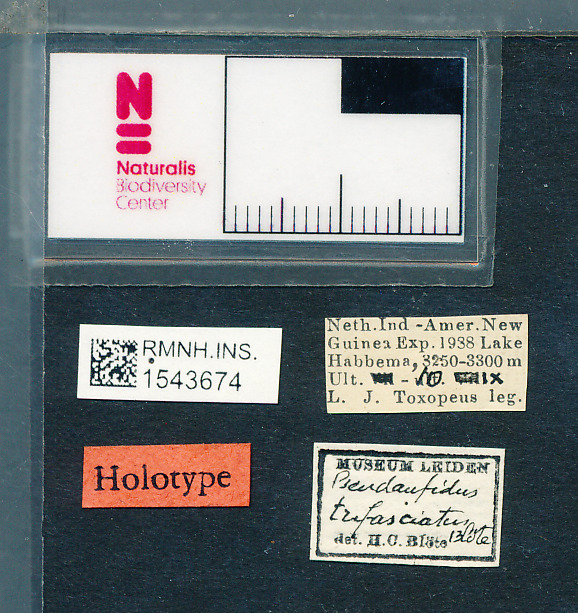
This is it: Pseudaufidus trifasciatus, a cicada species described in 1957 by entomologist and curator H. C. Blöte from Leiden. The cicada depicted above is not just any specimen of that species, but it is the so-called holotype: The specimen used when the species was first formally described by Blöte. It is the first of its species to get this name and therefore acts as representative of its species to humanity; in scientific sense is this the true Pseudaufidus trifasciatus.
Digitizingholotypes
At Naturalis we work hard to digitize our scientific collection including genetic information, and the holotypes are our highest priority. True bugs - an order which includes cicadas and plant lice - come first. Naturalis has hundreds of thousands true bug specimens, of which around 750 are holotypes.

Together with a team, collection manager Max Caspers goes by each specimen that has a red holotype label. They are registered, photographed and are going to be sampled in the future for DNA testing. When the team is done, all these specimens will be put together and managed. There is a lot of interest in these specimens from the scientific community, after all. Caspers: “These holotypes form the core of the collection and the base for the nomenclature of nature.”
More information
Profile page Max Caspers